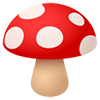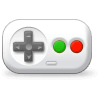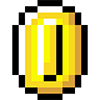-
Posts
39 -
Joined
-
Last visited
-
Days Won
1
Content Type
Profiles
Forums
Articles
Downloads
Gallery
Blogs
Everything posted by Sterophonick
-
Got a source for this? I've never heard this!
-
Here's a thought. Maybe @Jason Carr could make a "limited support release" variant of LaunchBox that is native to Linux, where updates are either slow to come or don't at all, and issues are of a low priority. This way, interest can be built up for possible Linux releases, if there is enough interest, that is. More of a proof-of-concept than anything else. Perhaps it's wishful thinking, but I just wanted to share an idea.
-
I really like the WIMPS layout of LaunchBox over something like Attract-Mode or EmulationStation.
-
I really hope we do get a proper conversion at some point. A lack of a proper way of running LaunchBox is the one thing keeping me from switching full-time. Lutris just doesn't have the feature set or the style. Just a somewhat boring GTK interface.
-
Eyyy! No problem!
-
So is this what your filesystem looks like? LaunchBox Emulators RetroArch RetroArch-Linux-x86_64-Nightly.AppImage.home .config retroarch configs default.cfg cores <cores> RetroArch-Linux-x86_64-Nightly.AppImage RetroArch.bat
-
You'll need to compile Dolphin yourself and then place the "dolphin-emu" executable in a folder named "Dolphin" in your emulators folder.
-
MAME Script cmd /c start /unix MAME/mame64 -verbose -rompath %1 %2 %3 Emulator settings: Edit these settings to fit the system you're trying to emulate. Currently working on a script that will run Windows games in Wine, however it's getting a bit frustrating. Dunno if I will ever get it to work
-
I remember a while back when Jason Carr said that he spent his weekend porting LaunchBox to MonoDevelop and got it to run, while BigBox was not feasible. I wonder what happened to that project... It certainly would boost Linux gaming quite a bit, for me Lutris isn't quite cutting it compared to what I can get with LaunchBox.
-
I find it very usable, however it has been tedious writing these scripts for the emulators and having to manually edit every Steam, Windows, and Linux game to have them work. The specific desktop I use is the variant of GNOME that comes with Pop!_OS 20.10. There's definitely a ways to go in terms if functionality, and I feel like some of the bugs are more of a Wine problem rather than a LaunchBox problem. I don't see it being usable as a primary game launcher on Linux without a lot of changes being made to either LaunchBox or Wine. It's never going to be perfect unless LaunchBox gets a native Linux conversion using Mono. If they ever do a conversion they need to add support for things like Wineprefixes and some Windows specific game settings, otherwise it's just gonna be a hassle. Heck, the base version could have like a "Linux mode" where it does everything necessary to make things work right.
-
I got Dolphin emulator to work for /f "delims=" %%i in ('winepath -u %1') do set content=%%i cmd /c start /unix Dolphin/dolphin-emu -e "%content%" Keep the emulator command line parameters empty. Have fun!
-
Quick update: I was able to get steam games to run, albeit very hackily, and I don't know of a way to make this work better... Anyway here's the script. cmd /c start /unix /home/%user%/.steam/debian-installation/ubuntu12_32/steam -nominidumps -nobreakpad %1 And here are the "Launching" settings for your game. Try it for yourself, see if it works.
-
I have been performing experiments with running LaunchBox on Linux through Wine, and I gotta say, with a bit of tweaking, it might be viable! I was able to import games through the Tools menu, and was able to launch a game! However, because it is being run through Wine, actually launching native Linux versions of emulators is a little bit tricky. With that in mind, I was able to write some batch scripts that will do just that! The example I'll put here is the one I wrote for RetroArch, for /f "delims=" %%i in ('winepath -u %2') do set content=%%i if %1=="gba" ( set core=RetroArch-Linux-x86_64.AppImage.home/.config/retroarch/cores/mgba_libretro.so set config=RetroArch-Linux-x86_64.AppImage.home/.config/retroarch/config/default.cfg ) echo %core% cmd /c start /unix RetroArch/RetroArch-Linux-x86_64.AppImage --verbose -c %config% -L %core% "%content%" (You will need to edit this yourself if you want more than just the Game Boy Advance) And the entry in the emulation menu looked like this Make sure that you avoid naming it "RetroArch" otherwise you'll set off a flag that will make setting parameters a little more cumbersome. Here are some other issues that I noticed: The appearance of context menus are bugged. Dragging and dropping games will cause LaunchBox to crash. Some fonts are looking a little rough and are missing certain glyphs Menus such as the "Edit Game" menu will turn black except for the option you are highlighting. The LaunchBox window will force itself to the front of the screen if the screen is ever updated. This is visible in the above YouTube video, where it takes me a bit of time to switch to RetroArch after launching it. This could use a little bit of work, but I am impressed with what I have been able to accomplish so far! I hope this eventually becomes an option, at the cost of a little extra maintenance.
-
I tried this the other day and it was incredibly unresponsive. Dragging a ROM onto the window will cause the program to hang. Lots of other things caused the program to hang It is worth noting that it might be a good idea to have an option to set a specific core directory for RetroArch.
-
-
VTech V.Smile V-Motion Released: 2008 Developer: VTech Manufacturer: VTech CPU: SunPlus µ'nSP @27 MHz Memory: 10K of WRAM Graphics: SunPlus SPG240 SoC Sounds: SunPlus SPG240 SoC Display: 320x240 @ 60Hz Media: ROM "Smartridge" Max Controllers: 2 The V.Smile V-Motion was an edutainment console developed and manufactured by VTech in 2008. It is a descendant of the V.Smile home/handheld console. It was released around the time that motion control became a fad in the gaming industry, due to the immense success of the Nintendo Wii, to capitalize on the craze, with an educational twist, of course.
-
DEC PDP-1 Released: 1959 Developer: Digital Equipment Corporation Manufacturer: Digital Equipment Corporation CPU: DEC PDP-1 @1 MHz Memory: 9,216 8-bit bytes Graphics: N/A Sound: None Display: Monochrome 895x672 Circular Display Panel Media: Paper Tape Max Controllers: 1
-
LeapFrog Leapster Released: 2003 Developer: LeapFrog Enterprises Manufacturer: LeapFrog Enterprises CPU: Argonaut ARCtangent A5 @9.6 MHz Memory: 2 MB of RAM Graphics: Integrated 2D Graphics Chipset Sound: Unknown Display: 160x160 @60Hz Media: ROM Cartridge Max Controllers: 1 The Leapster Learning Game System is an educational handheld game console aimed at 4 to 10 year olds (preschool to fourth grade), made by LeapFrog Enterprises. Its games teach the alphabet, phonics, basic math (addition, subtraction, multiplication, division), and art and animal facts to players. Along with a directional pad, the system features a touchscreen with a stylus that enables young users to interact directly with the screen. On February 5, 2008 LeapFrog announced the Leapster2 handheld device as a successor to the Leapster. The Leapster2 is essentially the previous system with an added USB port and SD card slot. These additions give the ability to play a downloaded full game or short game including the ability to log data on gameplay, such as what has been learned by the user or art created by the user. Downloadable games are not for sale. Games released since the Leapster2's release log user activity and will send this data to LeapFrog's "Learning Path" system, which tracks educational milestones completed. Completion of certain learning activity can allow online games to be accessed, and in the case of art created on the device, the art can be further embellished online and printed with a printer accessible by the user's computer.
-
Is there any possibility of allowing Box - 3D with Box - Front again?
-
For some reason, those settings were reduced, but I don't have LaunchBox premium, so I can't change them back.
-
Greetings. It seems that in a recent version of LaunchBox, something happened that prevented standard Box - Front images from appearing alongside Box - 3D. If anybody can explain why this change was made, I would really appreciate it.
-
Milton Bradley MicroVision Release Year: 1979 Developer: Milton Bradley Manufacturer: Milton Bradley CPU: Intel I8021, Texas Instruments TMS1100 Memory: 16 Bytes Graphics: N/A Sound: 2-Bit Binary Weighted Ones Complement DAC Display: 16x16 Monochrome LCD Media: ROM Cartridge Notes: The Microvision (aka Milton Bradley Microvision or MB Microvision) is the first handheld game console that used interchangeable ROM cartridges. It was released by the Milton Bradley Company in November 1979. The Microvision was designed by Jay Smith, the engineer who would later design the Vectrex gaming console. The Microvision's combination of portability and a cartridge-based system led to moderate success, with Smith Engineering grossing $15 million in the first year of the system's release. However, very few cartridges, a small screen, and a lack of support from established home video game companies led to its demise in 1981. According to Satoru Okada, the former head of Nintendo's R&D1 Department, the Microvision gave birth to the Game & Watch after Nintendo designed around Microvision's limitations.
-
Unisonic Champion 2711 Developer: Unisonic Manufacturer: Unisonic CPU: General Instruments CP1610 Memory: 256 bytes of RAM Graphics: N/A Sound: General Instruments AY-3-8800-1 GIC Display: 174x112 @30.027221 Hz Media: ROM Cartridge Max Controllers: 1 Notes: In the beginning of 1977, General Instrument designed a system called the "Gimini Mid-Range 8950 Programmable Game Set" and is also known as the "Gimini Challenger 8950 Programmable Game System". Among this system, they also conceived the "Gimini Economy 8600 Programmable Game Set" and the "Gimini Full-Range (or Deluxe) 8900 Programmable Game Set", which is another story. Unisonic Products Corporation (1115 Broadway, New York, NY 10010) learned about this designed game system and developped/ manufactured this console in their Japan facilities. Later in the same year, Unisonic unveiled their plans about the "Unisonic Tournament 2711" (with 8 built-in games and cartridges availability) which was to be showed at the CES and passing out brochures of their "Unisonic Tournament 2711". In the Popular Mechanics magazine (Dec. 1977) article by Dave Sagarin, the specification of the Tournament 2711 listed are: $150 price, comes with 4 built in games, $20 cartridge price and 4 cartridges available.
-
VTech V.Smile Baby Release Year: 2005 Developer: VTech Manufacturer: VTech CPU: SunPlus µ'nSP @ 27 MHz Memory: 10K of WRAM Graphics: SunPlus SPG28X System-on-a-Chip Sound: SunPlus SPG28X System-on-a-Chip Display: 320x240 @ 60Hz Media: ROM "Smartridge" Max Controllers: 1 Notes: V.Smile Baby Infant Development System is a unique learning system created especially for the littlest learner. V.Smile Baby combines a colorful activity panel with the enhanced, non-traditional element of TV learning to allow parents and their little ones to share special moments as their child begins to explore early learning concepts, such a shapes, colors, animals, and it even helps teach baby sign language. V.Smile Baby works with age-appropriate Baby Smartridges that include three "grow-with-me" play modes, allowing baby to grow in learning from 9-36 months.















